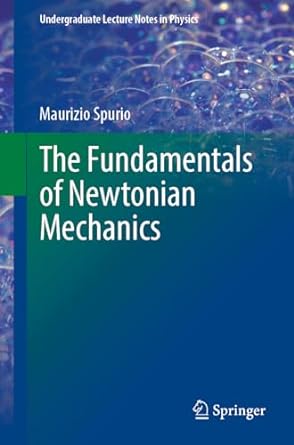Given two vectors (mathbf{a}) and (mathbf{b}), show that in intrinsic representation their vector product (mathbf{A}=mathbf{a} times mathbf{b})
Question:
Given two vectors \(\mathbf{a}\) and \(\mathbf{b}\), show that in intrinsic representation their vector product \(\mathbf{A}=\mathbf{a} \times \mathbf{b}\) corresponds to the oriented area of the parallelogram defined by the two vectors. Calculate the magnitude of the area in the case of the two vectors defined in the Question 8.
Question 8
Find the vector \(\mathbf{c}\) which added to the vectors \(\mathbf{a}=(4 \hat{\mathbf{i}}+3 \hat{\mathbf{j}}-2 \hat{\mathbf{k}})\) and \(\mathbf{b}=(2 \hat{\mathbf{i}}-\hat{\mathbf{j}}+\hat{\mathbf{k}})\) gives as a resultant \(\mathbf{r}=(4 \hat{\mathbf{i}}+3 \hat{\mathbf{j}}+1 \hat{\mathbf{k}})\)
Fantastic news! We've Found the answer you've been seeking!
Step by Step Answer:
Related Book For 

Question Posted:





